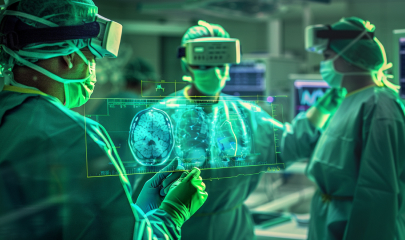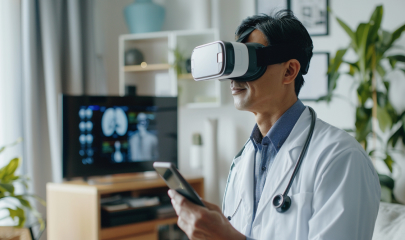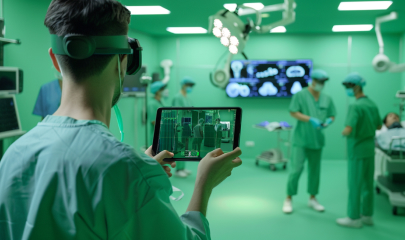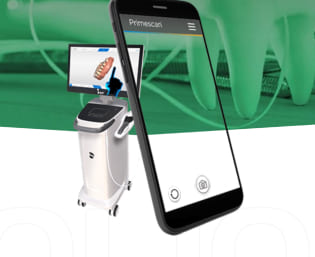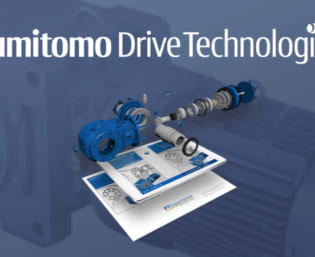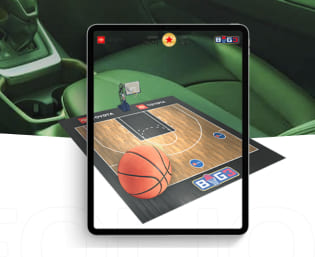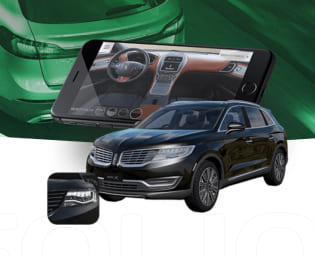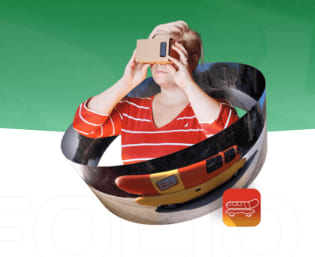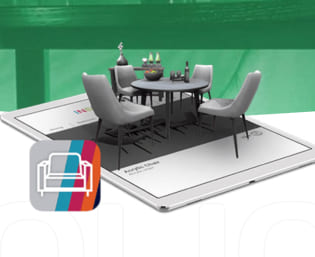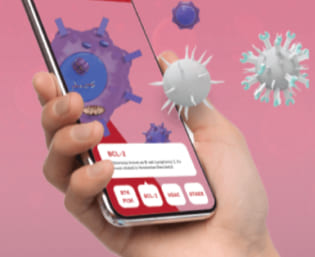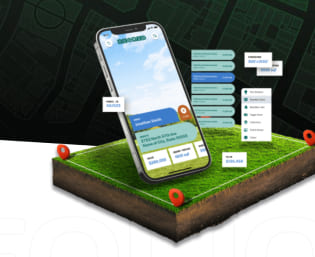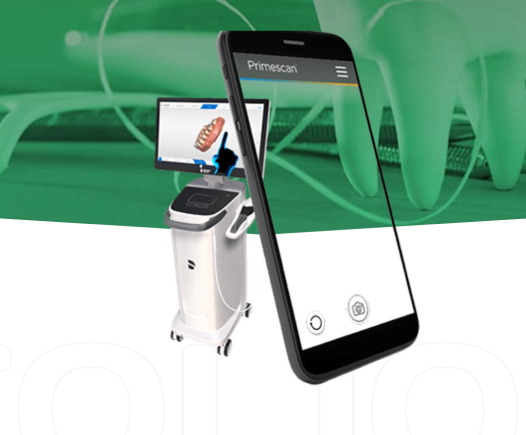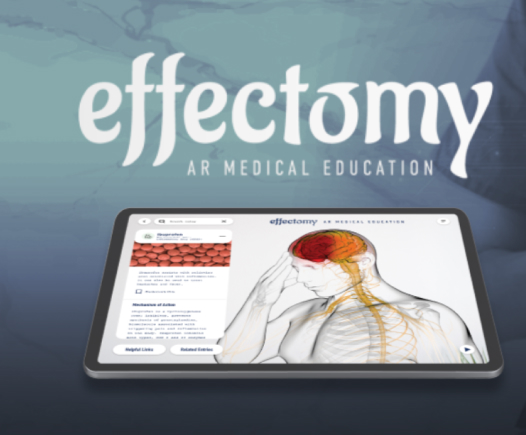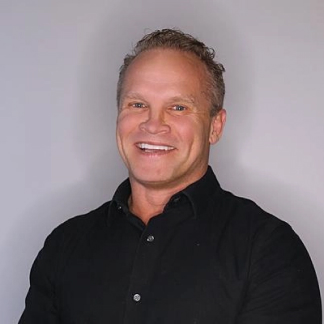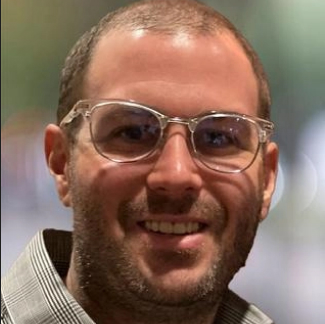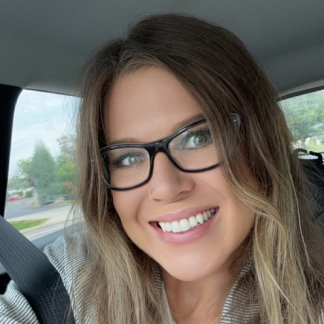AR & VR EXPERIENCES PROVEN TO CREATE RESULTS
AR & VR Medical Experiences Transforming the Industry of Healthcare
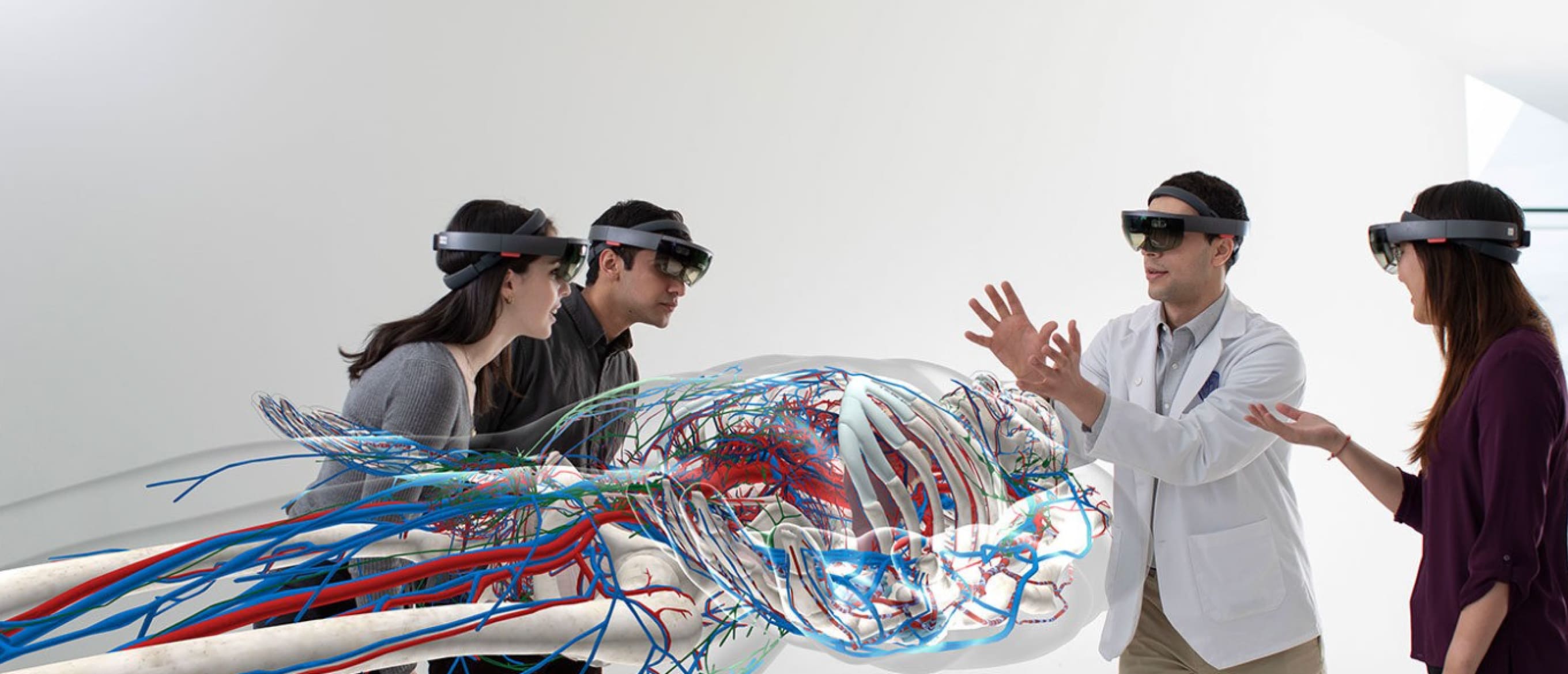
TRUSTED BY OVER 300 CLIENTS



Unlock the power of Augmented and Virtual
Reality in the Medical Industry
WE LOVE CREATING EXPERIENCES THAT GENERATE REAL VALUE
Results Speak For Themselves

Brett Bawel
Program Manager at MindFuel

Working with the entire Gravity Jack team was an incredible experience. From the design and prototype stage, to the final delivery, the Gravity Jack team exceeded our expectations.

Jerry Paffendorf
CEO of Regrid

From the first exploratory conversation through project scoping and execution, the GJ team was great to work with at all levels… They took the time to listen, understand, and get excited about our unique business and AR opportunity. More than that, they executed beautifully.
GRAVITY JACK CLIENT BLOG GALLERY
Augmented & Virtual Reality
for the Medical Industry
Augmented Reality in Healthcare: Transforming Surgery, Education, and Patient Care
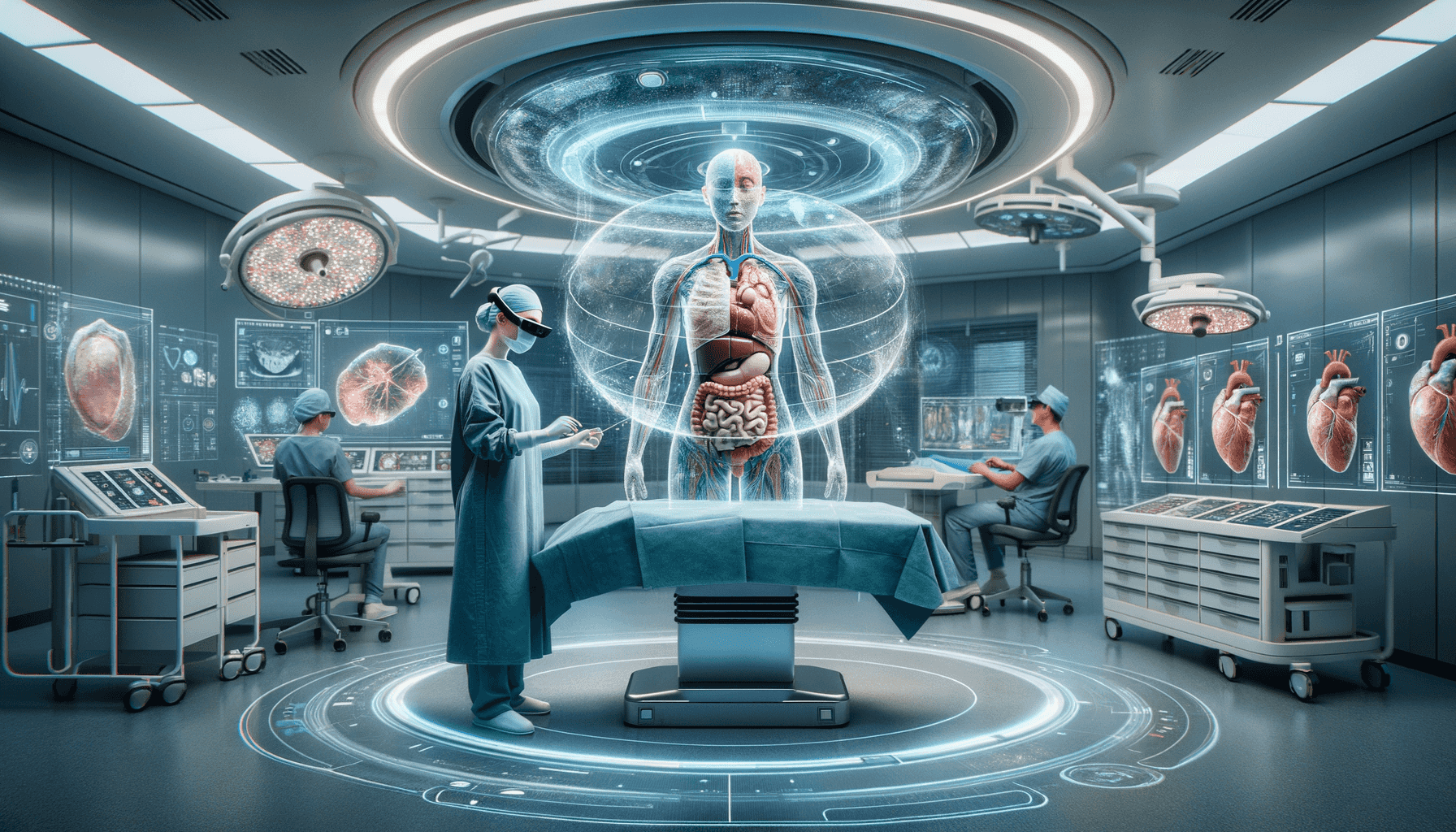
Exploring Virtual Reality’s Impact on the Medical Industry
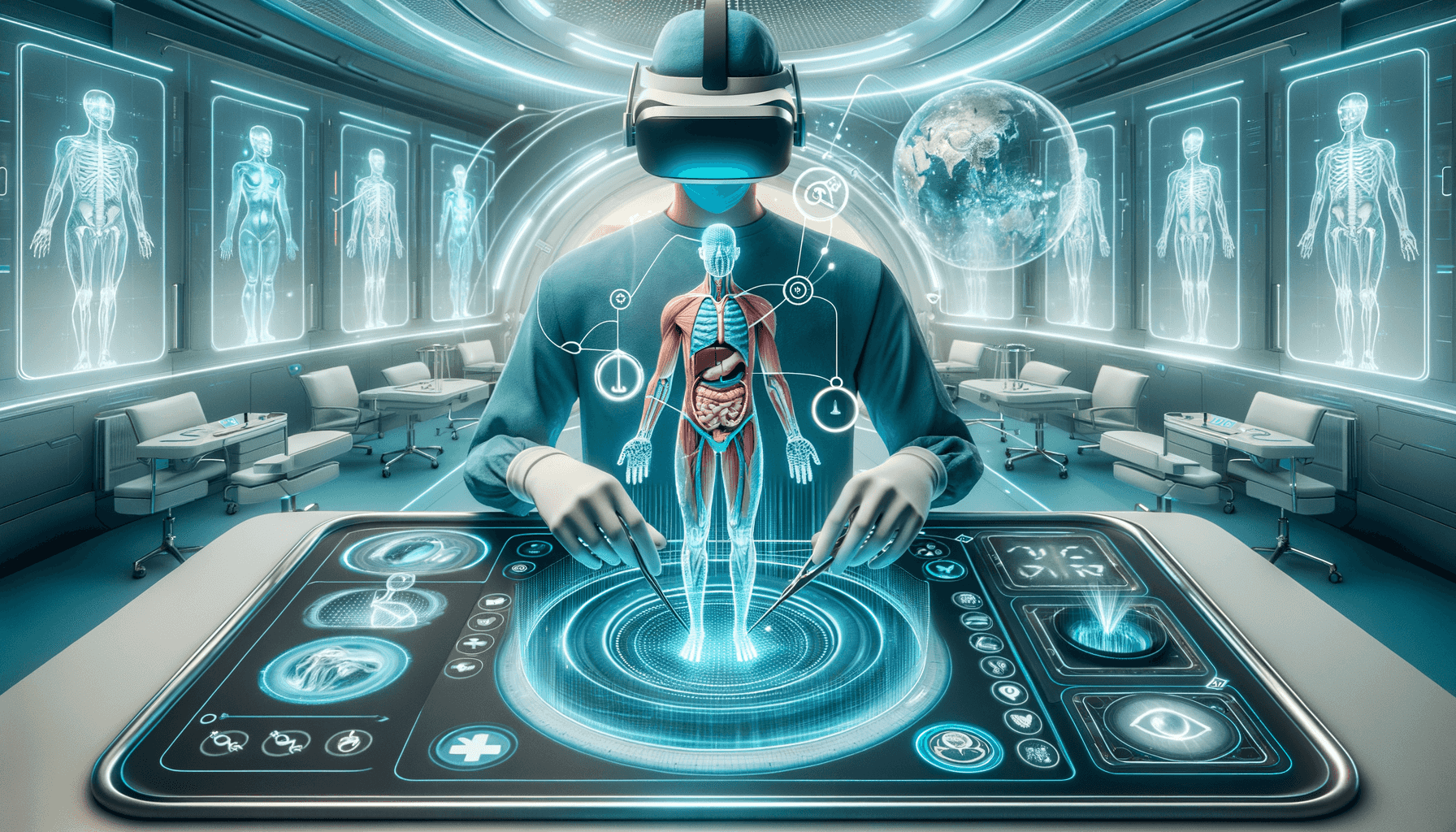
Empowering Patients: The Impact of Integrating Augmented Reality and VR Into Healthcare Education
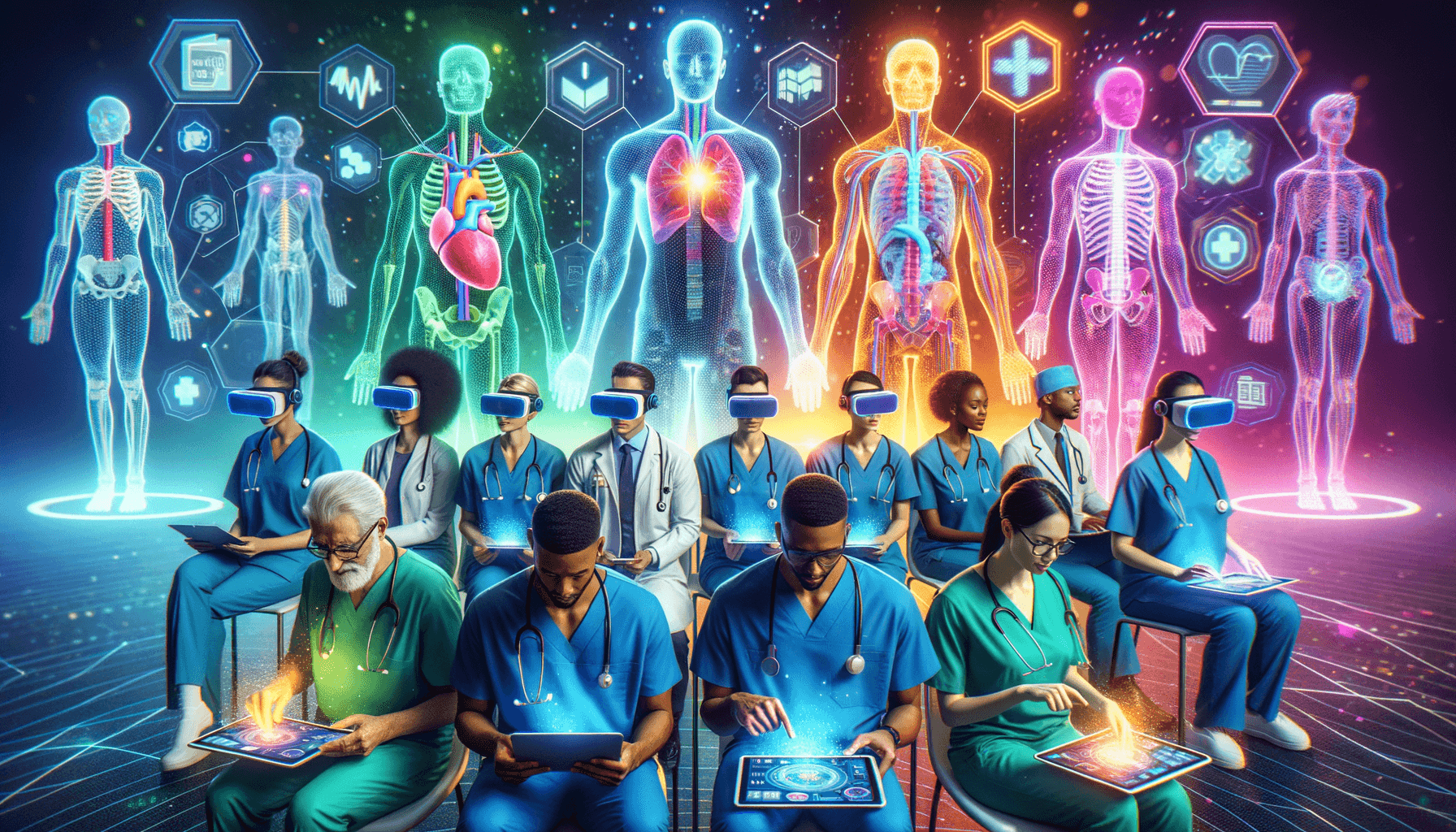
How Augmented Reality and Virtual Reality Are Reshapping Medical Training
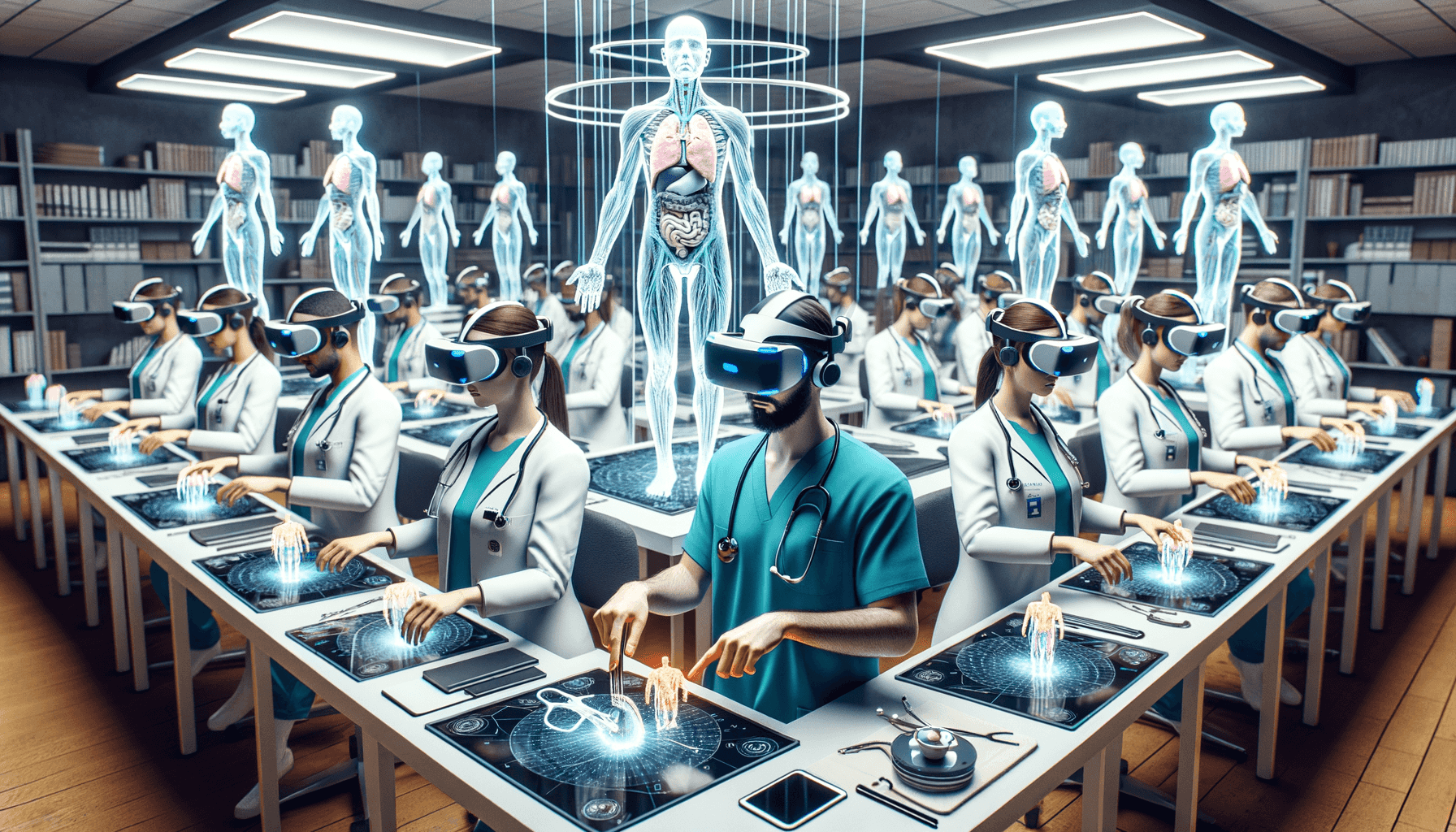
AR and VR Applications in Mental Health: Exploring Virtual Therapy, Mindfulness, and Wellness
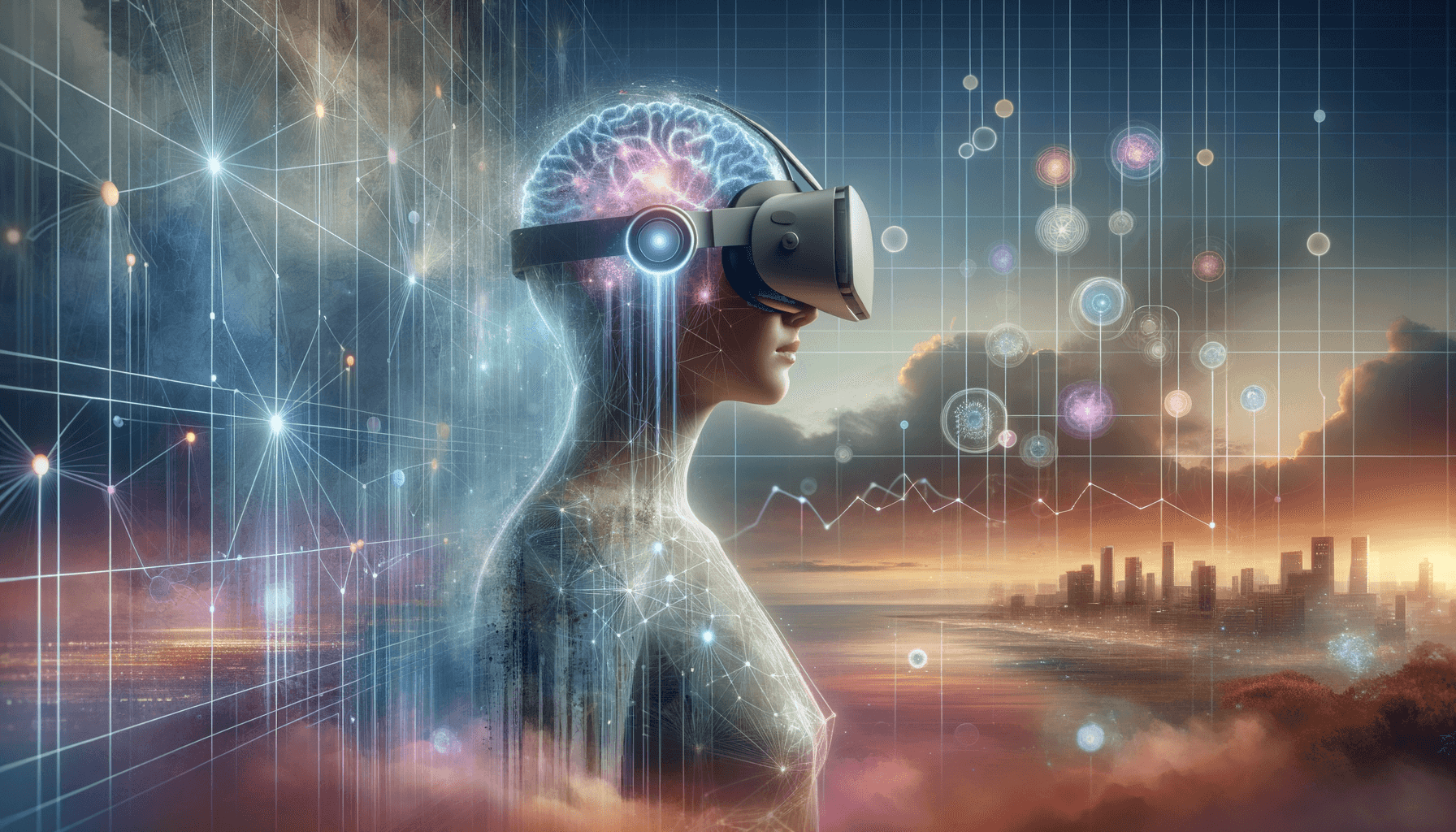
Enhancing Healthcare with Augmented Reality and Virtual Reality Headsets
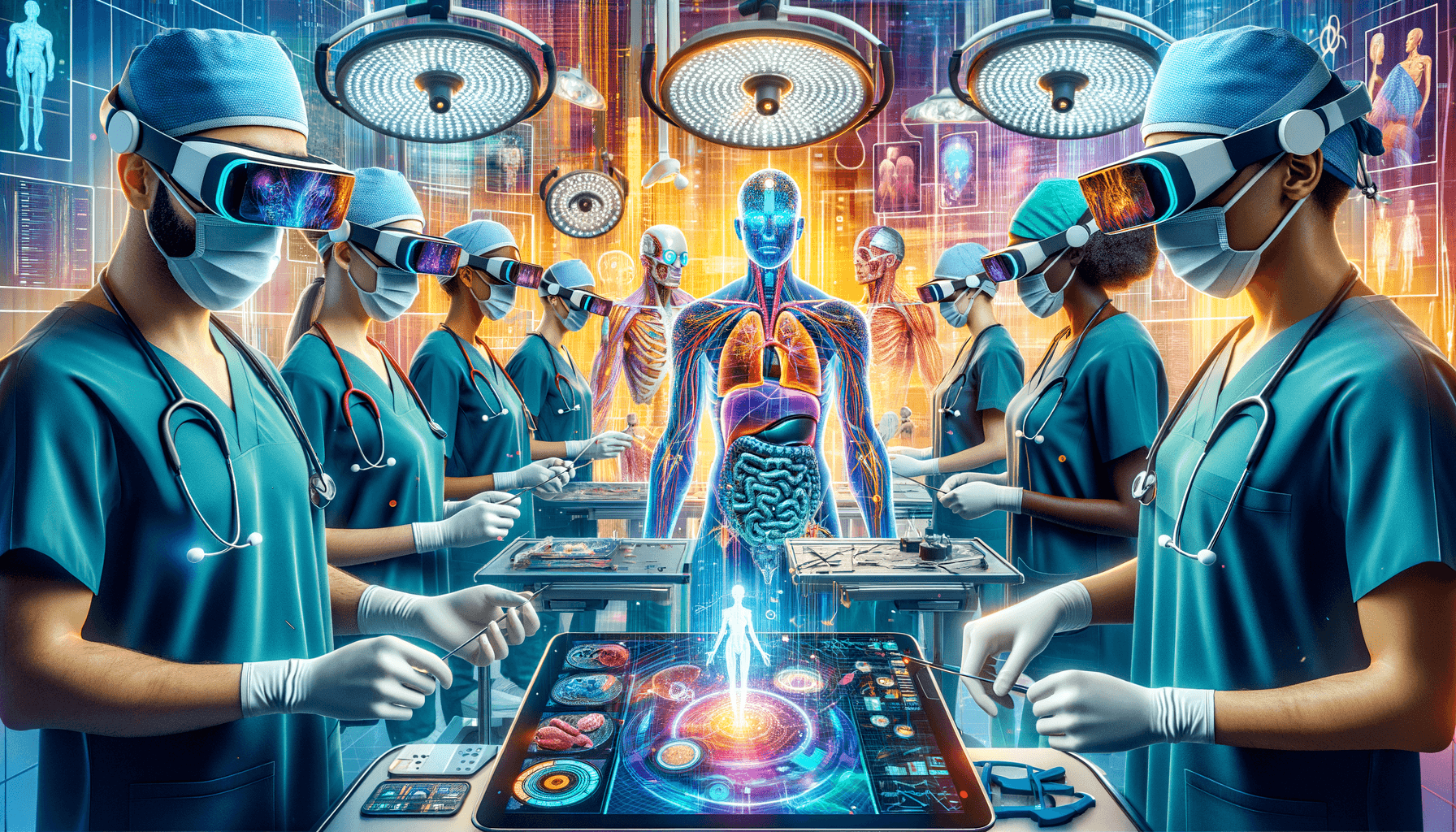

GRAVITY JACK MINI BLOGS
Augmented Reality in Healthcare: Transforming Surgery, Education, and Patient Care
Augmented Reality in Healthcare: Transforming Surgery, Education, and Patient Care
Augmented reality (AR) technology is rapidly advancing, and its applications in the medical industry are proving to be particularly significant. By allowing digital information to overlay the physical world, AR presents new possibilities for enhancing the quality of healthcare services, from surgery to medical education and patient care. Our company stands at the forefront of this innovative field, offering cutting-edge AR solutions tailor-made for the medical industry.
Enhanced Precision in Surgical Procedures with AR
The integration of AR in surgical environments allows surgeons to overlay critical patient information, such as MRI or CT scans, directly onto their field of view during procedures. This real-time guidance is not only valuable for planning pre-operative strategies but is also indispensable for making informed decisions during the operation itself. Our AR solutions offer seamless integration of this data-overlay capability, ensuring that the visualization of 3D anatomical structures is both accurate and intuitive.
One such example of success in this domain is Medivis, which has introduced SurgicalAR to facilitate the 3D visualization of patient anatomy in live surgical contexts. By reducing surgical times by an impressive 30%, Medivis underscores the efficacy of AR technology—a feature our solutions replicate and build upon to meet the unique needs of each medical practitioner.
AR's Impact on Medical Education
In medical education, the traditional approach of studying human anatomy is being revolutionized by AR. By offering interactive virtual models, students can achieve a deep and comprehensive understanding of complex physiological concepts without necessitating real cadavers. Our solutions are designed to support educators in creating immersive, interactive learning environments.
For instance, the Cleveland Clinic has effectively employed AR to assist medical students in understanding human anatomy more vividly. By replicating these advanced educational tools, our technology ensures that the next generation of healthcare professionals is well-prepared with an unparalleled understanding of the human body.
Augmented Patient Care and Diagnostics
Our AR technology excels in elevating the standard of patient care. By overlaying diagnostic data onto the patient's body or medical images, we enable healthcare professionals to improve the accuracy of their diagnoses and enhance their workflow efficiency. AccuVein's vein visualization technology serves as an example of this application, streamlining the process of locating veins and drastically reducing instances of multiple needle stick attempts.
Patient Education and Engagement Through AR
The capacity for AR to enrich the healthcare experience extends to patient education and engagement. By providing personalized treatment plans, immersive educational content, and the option for virtual consultations, AR applications like those developed by Kaia Health exemplify how patients can be actively involved in managing their conditions. Our company amplifies this potential by crafting custom AR experiences that refine healthcare delivery and foster better patient outcomes.
With the market for AR in healthcare expected to burgeon to $2.13 billion by 2026, there is clear evidence of the growing adoption of this groundbreaking technology. Gravity Jack is poised to guide medical institutions, educators, and healthcare providers through the integration journey, leveraging our extensive industry experience.
Our expertise aligns perfectly with the innovative efforts of AR pioneers such as Medivis, AccuVein, Surgical Theater, Magic Leap, and Kaia Health. Together, we are harnessing the power of AR to reshape healthcare for the better. As we continue to lead the way, our commitment to improving patient and provider experiences through advanced AR technology remains steadfast.
If you're looking for AR solutions that bring a new dimension of precision and engagement to your medical practice or educational institution, consider our services. We are dedicated to designing and deploying exceptional AR applications that meet the stringent demands of the medical industry. Contact us to explore how our technology can enhance your healthcare services and elevate the standards of your patient care.

GRAVITY JACK MINI BLOGS
Exploring Virtual Reality’s Impact on the Medical Industry
Revolutionizing Surgical Training with Virtual Reality
Pioneering Medical Education Through Immersive Simulations
The medical industry is experiencing a transformation like never before with the integration of Virtual Reality (VR) into surgical training and education. Once a concept of science fiction, VR now provides an unprecedented immersive learning experience for surgeons and medical students across the globe. Through the use of VR simulations, medical professionals can practice and master complex procedures within lifelike environments, significantly improving their skills without the risk associated with traditional training methods.
The market for VR in healthcare was valued at $2.1 billion in 2020 and is on a trajectory to skyrocket to $30.7 billion by 2026. This astonishing growth is fueled by the demand for cutting-edge diagnostic methods, enhanced surgical training, and patient-focused healthcare approaches. As the largest stakeholder within this surge, surgical training applications benefit from VR's ability to present a controlled, risk-free training platform, fostering a deeper comprehension of human anatomy and, ultimately, driving improved surgical outcomes.
Industry Innovations Shaping the Future
Leading the charge in this revolutionary virtual environment are companies like FundamentalVR, Osso VR, and Surgical Science, which have made significant inroads in medical education. These industry frontrunners have created platforms that combine the physical touch of haptics with visually rich VR experiences, often described as the ‘flight simulator’ for surgeons. Their work is paving the way for a new era of precision and proficiency in surgical procedures.
In practice, the implementation of VR has delivered measurable improvements. At Cedars-Sinai Medical Center, VR training curtailed procedure times and bolstered surgeons' speed in executing tasks. Similarly, Mayo Clinic's collaboration with FundamentalVR and the successes attributed to Osso VR's orthopedic training modules are testament to VR’s transformational capabilities in developing skilled healthcare professionals.
Real-World Impact and Sustainability
Beyond numerical growth, the altruistic value of VR in the medical field cannot be overstated. Unlike traditional cadaveric dissection, VR offers an ethical and sustainable alternative for exploring human anatomy and honing surgical techniques. This is not only environmentally responsible but also ensures equitable access to top-tier educational resources, regardless of an institution's financial or geographical constraints.
Additionally, amid a broader push for patient welfare, VR serves as a beacon of innovation. It offers a cost-effective avenue for continuous learning and practice, reducing the need for repeated trials on patients and thereby enhancing care quality while safeguarding patient safety.
Gravity Jack's Commitment to Advancing Medical Training
At Gravity Jack, we take pride in being at the forefront of Augmented Reality and Virtual Reality technology, with over a decade of experience catalyzing digital transformations across various industries. Our offerings are particularly pertinent to the blossoming field of VR in medical education and surgical training. We understand the key drivers and challenges that the healthcare sector faces in adopting VR, and we are committed to providing bespoke, technologically sophisticated solutions that align with the stringent requirements of medical training.
Our team excels in creating interactive, realistic simulations that serve as the ultimate training ground for surgeons and medical students. Our solutions are grounded in meticulous research and are developed in close consultation with medical experts to ensure physiological accuracy and educational efficacy. We cater to diverse learning needs by supporting various languages and platforms, from mobile devices to high-end VR systems.
We are not just a technology provider; we are partners in progress. Our vision aligns with that of industry leaders and institutions seeking to raise the bar in medical training and patient care. Our expertise and extensive portfolio present a clear advantage, putting us in a unique position to enrich the future of medical education.
Embrace the Future with Gravity Jack
As we look to a future where VR continues to integrate into the healthcare landscape, the opportunity to enhance surgical training and medical education has never been more promising. We warmly invite educational institutions, healthcare providers, and industry partners to discover how Gravity Jack can tailor VR solutions to meet specific training needs and clinical objectives, ensuring that surgeons and students are equipped with the tools they need to succeed in an evolving medical world.
Explore our offerings and find out how we can elevate your educational strategies with immersive VR technology that sets new benchmarks for excellence and innovation in medical training. Contact us to discuss your requirements and take the first step towards a tomorrow where precision and proficiency in surgery become standard markers of all healthcare professionals' capabilities.

GRAVITY JACK MINI BLOGS
Empowering Patients: The Impact of Integrating Augmented Reality and VR Into Healthcare Education
Augmented and Virtual Reality: Pioneering Patient Education in Healthcare
The Transformation of Healthcare Education through AR and VR Technologies
The integration of augmented reality (AR) and virtual reality (VR) into patient education is a significant stride forward in the healthcare industry. These technologies provide an engaging learning experience that dramatically enhances the way patients understand and manage their conditions. As we dive into this evolution, we'll explore the industries that are driving innovation and adoption, highlight our role as a leader in this space, and share insights into the tangible benefits that our AR and VR solutions can offer.
Market trends signal robust growth, with projections for the AR and VR healthcare sector reaching $5.1 billion by 2025, up from $769.2 million in 2017. This substantial market expansion is captured in our company's trajectory, as we develop tailored, interactive experiences for patient education that align with the increasing demand for immersive learning tools.
Implementing AR and VR: Best Practices in Patient Education
To leverage AR and VR's full potential in healthcare, it is crucial to adhere to defined best practices. As a company at the forefront of this innovation, we prioritize developing interfaces that accommodate patients of varying ages and technological proficiencies. Accurate medical representations are a cornerstone of our applications, ensuring credibility and practical utility. Furthermore, our platforms are enriched with engaging, interactive elements that not only inform patients but also inspire their active participation in health management.
Leaders in the industry, such as EchoPixel and Orca Health, have demonstrated the impact of AR and VR in visualizing anatomical structures and supporting patient-provider communication. These success stories resonate with our own mission to provide cutting-edge solutions that break barriers in healthcare education and foster informed patient decisions.
Case Studies: Real-World Impact of AR and VR on Patient Outcomes
The impact of AR and VR on healthcare is not purely theoretical; real-world implementations provide compelling evidence of their value. At Cedars-Sinai Medical Center, the use of VR for pain management underscores these technologies' effectiveness, with reported reductions in patient pain levels. Similarly, The Children's Hospital of Philadelphia leverages AR to ensure clear communication and planning in surgical procedures.
In line with these examples, our company continues to deliver AR and VR experiences that make a tangible difference in patient care. By creating immersive environments for pain management or simulating complex procedures for educational purposes, we contribute to the broader trend of adopting these technologies to improve healthcare outcomes.
Our Role: Leading the March Toward Advanced AR and VR Patient Education
Our dedication to revolutionizing patient education through AR and VR is evident in our customized solutions. With expansive industry knowledge, we stand as one of the oldest augmented reality companies in the United States. Our expertise encompasses various aspects, from initial concept development to sophisticated API integration, catering to unique project needs ranging from mobile phones to advanced VR environments. Pricing, while competitive, reflects the complexity and innovation of each project.
"The Wartribe of Binyamin," our in-house AR game, showcases our creative capabilities and technological prowess. Through the engaging narrative and the use of AI, we demonstrate our commitment to pushing the boundaries of AR and VR applications. By focusing on such immersive experiences, we not only entertain but also educate, demonstrating the versatility and depth of AR and VR in conveying complex concepts.
In conjunction with the significant market growth and best practices, our hands-on approach ensures the effective utilization of AR and VR technologies. As industry leaders continue to innovate, we stand alongside them, committed to providing robust AR and VR solutions that truly enhance patient education.
Join the Evolution of Healthcare Education with Our AR and VR Solutions
Our mission extends beyond creating engaging AR and VR experiences; we aim to equip healthcare providers with the tools necessary for impeccable patient education. As healthcare evolves, so does the need for advanced learning methods. Join us in this journey and discover how our expertise in AR and VR can help you elevate patient understanding and treatment adherence.
For inquiries about integrating these pivotal technologies into your patient education programs, please reach out to us. Together, we can transform the patient healthcare journey through the power of augmented and virtual reality.

GRAVITY JACK MINI BLOGS
How Augmented Reality and Virtual Reality Are Reshapping Medical Training
Revolutionizing Medical Training Through AR and VR Technologies
The Emergence of Interactive Learning in Healthcare
The healthcare industry is on the cusp of a transformation where Augmented Reality (AR) and Virtual Reality (VR) technologies are leading the frontier in medical training and education. These tools offer an unprecedented level of immersion and interactivity, allowing medical students and professionals to visualize complex anatomical structures in three dimensions, which significantly improves comprehension and retention of medical data. AR and VR stand out as revolutionary learning mediums that offer an experiential layer to the traditional methodologies, making the daunting journey of medical education a bit more navigable.
With a projected growth to a staggering $5.1 billion market value by 2025, as indicated by the Harvard Business Review, it's evident that AR and VR are not just fads but substantial advancements in the educational arsenal of the medical community. Furthermore, John Hopkins University's research, which reveals a remarkable 230% performance increase in surgical procedures by VR-trained users, is a testament to the effectiveness of these technological applications in practice.
Enhancing Surgical Skills Through Virtual Practices
Virtual Reality simulations have revolutionized the way surgical training is approached by creating a risk-free, realistic environment for practice. This aspect is incredibly vital as it prepares the trainees for operating procedures without the direct implications on patient safety. VR's capability to emulate lifelike surgical scenarios means that trainees can augment their skills, fine-tune their techniques, and reduce potential errors before ever making an incision on a real patient.
The rising adoption of these technologies is supported by impressive statistics such as those from the Mordor Intelligence report, indicating a 23.6% CAGR in the AR and VR healthcare market from 2020 to 2025. As institutions increasingly integrate these tools, we at Gravity Jack are positioned as the epitome of tailor-made AR and VR solutions, specifically catering to the evolving needs of medical training.
Leadership and Success in AR and VR Integration
Within the realms of this technological revolution, various platforms have emerged as industry leaders. Osso VR, for one, is raising the bar with VR surgical training modules that have helped professionals achieve a 230% increase in performance. Such results underline the capability of immersive technology to influence and enhance medical procedures. Meanwhile, EchoPixel's AR technology empowers doctors to interact with patient-specific organs and tissues, contributing to meticulous and personalized care.
Building on these successes, Gravity Jack provides cutting-edge AR and VR services that align seamlessly with best practices, such as using AR for guided imaging and developing immersive VR training environments. We pride ourselves on creating solutions that not only match but exceed industry standards, setting a new benchmark for medical training excellence.
Real-World Impact of AR and VR in Medicine
Tangible evidence of the effectiveness of AR and VR technologies is demonstrated through examples like Vanderbilt University Medical Center's adoption of Osso VR for orthopedic residency training. Similarly, Medical Realities' global outreach with the first 360-degree virtual reality operation speaks volumes of the potential international impact of these technologies. At Gravity Jack, we are dedicated to pushing these boundaries further, with a commitment to developing experiences that are not only engaging but are also aligned with the global medical community's ambitions.
Through collaboration and innovation, our services amplify the capabilities of medical institutions to train their professionals with the highest standards. Our commitment to this industry is driven by an understanding of the intricacies involved in medical training and the precise requirements of healthcare professionals.
Your Partner in AR and VR Medical Training Solutions
As we witness the transformation of medical training through AR and VR technologies, Gravity Jack stands at the forefront to offer personalized, engaging, and effective solutions. Our multidisciplinary team ensures that each immersive experience we craft enriches the learning journey of medical trainees, ultimately translating into superior patient care and safety.
We invite medical institutions and professionals eager to embrace the future of medical education to explore our services. Together, we can navigate the complex terrain of healthcare training, enhancing the skills and competencies of medical staff through the power of augmented and virtual realities.
To discover how our AR and VR solutions can be tailored to your training needs, connect with us and step into the future of medical education.

GRAVITY JACK MINI BLOGS
AR and VR Applications in Mental Health: Exploring Virtual Therapy, Mindfulness, and Wellness
Augmented Reality and Virtual Reality as a Salve for the Mind
In recent years, we have witnessed a profound shift in the landscape of mental health treatment. As technology advances, the realms of augmented reality (AR) and virtual reality (VR) have emerged as vital components in the fight against mental health conditions. These tools have become more than just innovative avenues for entertainment; they now present a gateway to potentially life-changing therapeutic experiences. This blog takes an in-depth look at the applications of AR and VR in promoting psychological well-being and the important role our company, a pioneer in this technological revolution, plays in this field.
The Growing Market for AR and VR in Mental Health
Research has pointed towards a growth that is both rapid and responsive in the AR and VR healthcare market. With a projected valuation reaching upwards of USD 5.1 billion by 2025, these technologies have taken the mental health arena by storm. There is a unanimous recognition among industry leaders of the transformative potential AR and VR bring to therapeutic settings. They have become mediums through which stress, anxiety, and a host of other conditions can be managed more effectively.
The therapeutic use of AR and VR has been amplified due to recent innovation in 3D imaging and auditory technology. Coupled with the distressing surge in mental health cases, it's become imperative for healthcare providers to integrate these interactive solutions into standard care practices. Their seamless adoption has been reflected in a staggering 30.2% CAGR prediction for the VR/AR healthcare market from 2019 to 2025.
Bridging Therapy and Technology
Implementations of AR and VR in mental health are as diverse as the conditions they aim to treat. Businesses like Psious, Lim Insight, and BehaVR are currently at the forefront of pioneering VR applications to provide relief from anxiety, stress and to promote overall mental well-being. They've developed platforms that transcend traditional treatment methodologies, allowing therapists to leverage the power of immersive environments in their practice.
Our company stands among these revered innovators, distinguished by our deep-rooted expertise and our oldest tenure in the augmented reality industry in the USA. We offer tailored AR and VR solutions that do more than just follow trends—we aim to set them. Our commitment to pushing the boundaries of what technology can do in the mental health space has led us to develop experiences that are fully immersive, providing users with a unique sense of presence crucial for effective mental health treatments.
Transforming Therapy Through Immersive Experiences
In practice, the use of AR and VR for mental health can be seen in institutions like UCLA Health and Sharp Brampton Hospital. Their utilization of VR for pain management signals a broader acceptance and demand for technology-driven wellness. These virtual experiences empower patients to explore healing environments and engage in introspection, fostering new coping strategies and resilience-building without ever leaving the safety of a therapist's office.
We recognize this potential and have been instrumental in creating spaces that cater to the psychological well-being of individuals. With our extensive experience in crafting immersive experiences, our AR and VR solutions are designed to be accessible and user-friendly, focusing on facilitating stress management, reducing anxiety, and aiding in various other mental health conditions.
Tailored AR and VR Interventions
At our core, we understand that every mental health journey is deeply personal. This is why our approach to AR and VR in mental health is centered around customization. We work with industry stakeholders to develop solutions that cater to specific therapy needs—from deep sea adventures for relaxation to simulated social situations for those with anxiety. Additionally, our services are backed by thoughtful creative direction and original coding, ensuring each experience is effective for its intended therapeutic outcome.
As pivotal actors in this space, we've seen the results first-hand. Our services have assisted in better stress management, created environments conducive to calm and healing, and even facilitated virtual therapy sessions that comprehensively cater to a patient's specific needs.
Engage with a Leader in AR and VR Solutions for Mental Health
It is clear that the intersection of AR, VR, and mental health is not just an exciting development; it is a necessary one. As we navigate through an era where mental health is rightly gaining focus, technology stands as a beacon of innovation in effecting change and delivering results.
We invite organizations, therapists, and institutions seeking to harness the potential of AR and VR for mental health to explore our offerings. At our company, we are deeply invested in creating virtual experiences that aid in achieving psychological well-being.
To learn more about how our AR and VR solutions can support your therapeutic programs, or to start a dialogue on how we can assist in the development of customized applications, please reach out and connect with us. It's not just about adopting technology; it's about embracing a future where mental health treatment is more accessible, engaging, and effective than ever before.

GRAVITY JACK MINI BLOGS
Enhancing Healthcare with Augmented Reality and Virtual Reality Headsets
Revolutionizing Healthcare Delivery with AR and VR Technologies
The integration of Augmented Reality (AR) and Virtual Reality (VR) technologies into the healthcare industry is no longer a vision of the future; it's an evolving reality. Innovative AR and VR headsets from companies such as Oculus and the anticipated Apple Vision Pro are set to significantly impact how medical services are delivered, taught, and received. As the oldest AR company in the United States, our team at Gravity Jack is at the forefront of this transformation, delivering bespoke solutions that tailor these advanced technologies to the unique needs of medical professionals and patients alike.
The Growth of AR and VR in Healthcare
The healthcare sector is on the brink of a technological renaissance, with AR and VR being key driving forces. The global market for these technologies in healthcare is projected to soar to $5.1 billion by 2025, evidencing the increasing demand for innovative and effective digital solutions. The practical applications of VR and AR are vast—from surgical guidance to virtual medical training—and are witnessing a rapid adoption rate within medical institutions and hospitals around the world.
Hands-free Operational Precision in Surgery
Surgeons are beginning to experience the unparalleled benefits of hands-free operations, thanks to AR and VR headsets. For instance, Oculus Quest 2 headsets are playing a crucial role in surgical planning and execution. They allow medical professionals to visualize complex procedures before making a single incision, providing a level of precision and safety previously unattainable. Similarly, the OpenSight Augmented Reality System overlays vital patient data directly onto the surgical field, aiding surgeons with real-time guidance, thus minimizing the risk of errors and enhancing surgical outcomes.
Transforming Medical Education Through Interactive Learning
By partnering with industry leaders, we at Gravity Jack provide institutions with medical education solutions that leverage AR and VR to create interactive learning environments. A remarkable example is the use of Microsoft's HoloLens2 by Case Western Reserve University, where the students engage with 3D anatomical models to learn about human physiology in an immersive format. Our tailor-made interactive platforms foster a hands-free and focused educational experience, enabling students to grasp complex medical concepts more effectively than traditional learning methods.
Patient Care and Comfort with VR and AR
In patient care, too, AR and VR headsets are making a marked difference. Companies like XRHealth are utilizing VR to administer cognitive behavioral therapy for patients dealing with chronic pain, stress, or anxiety. Moreover, remote VR-based therapies by MindMaze facilitate at-home rehabilitation for stroke and traumatic brain injury survivors. Our expertise in creating customized AR and VR solutions extends to designing protocols and systems that prioritize patient comfort and privacy, ensuring that treatments are not just effective but also humane and considerate.
Why Choose Gravity Jack for AR and VR Medical Solutions?
We understand that each medical facility has its unique set of challenges and requirements. That is where our longstanding experience and expertise in AR and VR technologies come into play. We provide:
- Custom solutions that cater specifically to the distinctive needs of your medical practice or educational facility.
- Comprehensive planning, development, and deployment strategies.
- Innovative applications that seamlessly integrate with your current operational systems, optimizing the workflow without significant disruptions.
Our devotion to the highest standards of quality ensures that the AR and VR solutions we craft not only meet but exceed the expectations of the medical community and their patients.
In conclusion, the incorporation of AR and VR headsets raises the bar for medical training, education, and patient care. Seamless hands-free operation through devices such as Oculus and the anticipated Apple Vision Pro are charting a course toward a more precise, efficient, and patient-focused healthcare ecosystem.
To explore how our offerings at Gravity Jack can elevate your medical practice or institution, we encourage you to reach out. Together, let's advance the frontiers of healthcare with augmented and virtual reality. Contact us today to start harnessing the potential of these extraordinary technologies.
HOW CAN WE MAKE THIS PROCESS EASIER FOR YOU?
Frequently Asked Questions
Is AR or VR preferable for my project?
If your goal is to enhance real-world medical procedures or training by overlaying digital information onto the user’s physical environment, AR may be more suitable. On the other hand, if you aim to create completely immersive simulations or environments that transport users into virtual worlds, VR could be the better choice. If you’re feeling unsure, the Gravity Jack team can help assess factors such as the level of immersion needed, target audience, technical capabilities, and practical constraints to make an informed decision.
What are 5 examples of Augmented Reality in the medical industry?
- Anatomical Visualization: Overlay detailed 3D models of human anatomy onto a patient’s body, aiding in medical education, surgical planning, and patient consultation.
- Vein Visualization: Assist medical professionals in locating veins for blood draws, IV placements, and other procedures by overlaying a map of veins onto the patient’s skin, making them more visible and accessible.
- Surgical Navigation: Real-time guidance and navigation during surgical procedures by overlaying virtual images onto the surgical field. Surgeons can see critical structures, such as blood vessels or tumors, superimposed on the patient’s anatomy, improving accuracy and reducing the risk of complications.
- Medical Training Simulations: AR simulations can recreate realistic medical scenarios for training purposes. Medical students and professionals can practice diagnosing conditions, performing procedures, or responding to emergencies in a controlled virtual environment, enhancing their skills and confidence without risking patient safety.
- Patient Education and Rehabilitation: Educate patients about their medical conditions, treatment options, and rehabilitation exercises. Patients can interact with virtual models of their own anatomy or medical devices, gaining a better understanding of their health and improving adherence to treatment plans.
What are 5 examples of Virtual Reality in the medical industry?
- Surgical Simulation: Enable surgeons to practice and refine their surgical techniques in a virtual environment. Simulations can replicate various surgical procedures with realistic haptic feedback, allowing surgeons to improve their skills, reduce operating room time, and minimize risks to patients.
- Pain Management and Therapy: Immersive VR environments can help patients manage pain, reduce anxiety, and improve overall well-being by transporting them to relaxing or engaging virtual worlds.
- Phobia Treatment: Patients can confront their fears in a controlled virtual environment, gradually desensitizing themselves to triggers and learning coping mechanisms. VR simulations can recreate scenarios such as flying, heights, or social situations, allowing therapists to customize treatment for individual patients.
- Medical Education and Training: Virtual simulations can replicate complex medical scenarios, anatomy lessons, or patient interactions, providing hands-on training in a safe and cost-effective manner. VR also enables collaborative learning and remote access to educational resources.
- Rehabilitation and Physical Therapy: Interactive VR exercises and games encourage movement, balance, and coordination, making therapy sessions more engaging and motivating. Virtual environments can simulate real-life activities and challenges, allowing patients to practice skills and track their progress over time.
Do I need an AR/VR headset for medical training?
For certain types of training, such as immersive simulations or virtual reality (VR) experiences, a headset may be necessary to fully engage participants and provide a realistic learning environment. VR headsets can offer immersive experiences where trainees can interact with virtual patients, perform procedures, or navigate complex medical scenarios.
However, for other types of training, such as augmented reality (AR) applications that overlay digital information onto the real world, a headset may not always be required. AR can be accessed through various devices like smartphones, tablets, or AR glasses, depending on the specific application and its intended use case.
Can you recreate any type of medical procedure in AR or VR?
Yes! At Gravity Jack, we have extensive experience in developing custom medical experiences tailored to our clients. Our team of skilled developers, designers, and engineers can replicate specific medical procedures using AR/VR and industry best practices. We work closely with clients to understand their exact requirements and goals, ensuring that the simulation accurately represents the procedure and meets their training objectives. Whether it’s surgical simulations, patient education modules, or medical training scenarios, we have the experience to deliver high-quality, realistic applications tailored to your needs.


